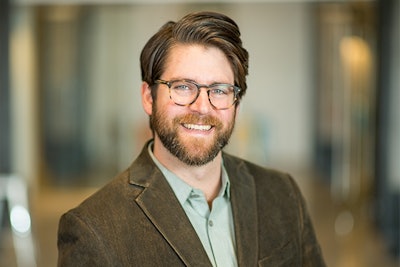On Spanish radio stations near Wenatchee, Wash., advertisements air for Wenatchee Valley College (WVC). Brochures, fliers, and information sessions are bilingual, and intentional connections built with area Latinx community groups ensure that future students know they are welcome at WVC even before they graduate high school.
WVC, an associate’s and bachelor’s degree granting institution, has two dual enrollment programs: Running Start, which brings students to WVC, and College in the High School, held on high school campuses. These programs waive tuition and connect students with academic counseling to ensure their success.
 Dr. Karen A. Stout, president and CEO of Achieving the Dream.
Dr. Karen A. Stout, president and CEO of Achieving the Dream.
According to preliminary data from the National Student Clearinghouse, a research organization collecting data from the majority of U.S. higher education institutions, fall 2022 dual enrollment at two-year colleges grew by 11.5%. That boost helped recover some of the losses experienced by community colleges during the height of the COVID-19 pandemic.
But dual enrollment doesn’t just offer larger enrollment numbers. If implemented carefully, these programs can attract and retain traditionally underserved student populations, offering equitable access to higher education and giving students a chance to realize they can succeed in college.
“It’s an enrollment but also a mission and purpose strategy,” said Dr. Karen A. Stout, president and CEO of Achieving the Dream, a network of over 300 community colleges working to equitize higher education.
“You can create a connection and experience that builds sense of belonging and affirms self-efficacy and their potential, especially if you think about these opportunities as building communities for these students,” said Stout. “The colleges really thinking about community building are gaining more matriculated students as a result of their dual enrollment work.”
John Fink, senior research associate and program lead with the Community College Research Center (CCRC) at Columbia University in New York, has been studying dual enrollment programs and how they can be used to broaden access to higher education. Working closely with the nonprofit Aspen Institute, he helped create The Dual Enrollment Playbook, which examines inequity in dual enrollment programs.
 John Fink, senior research associate and program lead with the Community College Research Center (CCRC) at Columbia University in New York.
John Fink, senior research associate and program lead with the Community College Research Center (CCRC) at Columbia University in New York.
Some dual enrollment programs are what Fink called “programs of privilege,” targeting students who are already likely to proceed into postsecondary education. Stout agreed, citing older models of programming that limit attendance to students with high GPAs, or offer randomized courses with no clear pathways to continuing education.
“We can start thinking differently about how students enter dual enrollment courses,” said Stout. “Work intentionally, high school by high school, to deliver sources and packages designed around pathways into occupational associate’s degree programs or transfer programs.”
At WVC, connections with local high school partners are a priority. Monroe said she and her team work for “clear and consistent communication,” with school representatives every month. To ensure they are reaching underrepresented students, Monroe said her team “seeks and builds relationships with community groups that are infiltrated and serving those targeted groups of people.”
Monroe added that she hopes to expand that intentional connection beyond WVC’s area high schools and into the middle schools.
“We want to educate the younger generation about our options,” she said. “Help them start thinking about how they can better prepare and see themselves as college material.”
Liann Herder can be reached at [email protected].
















